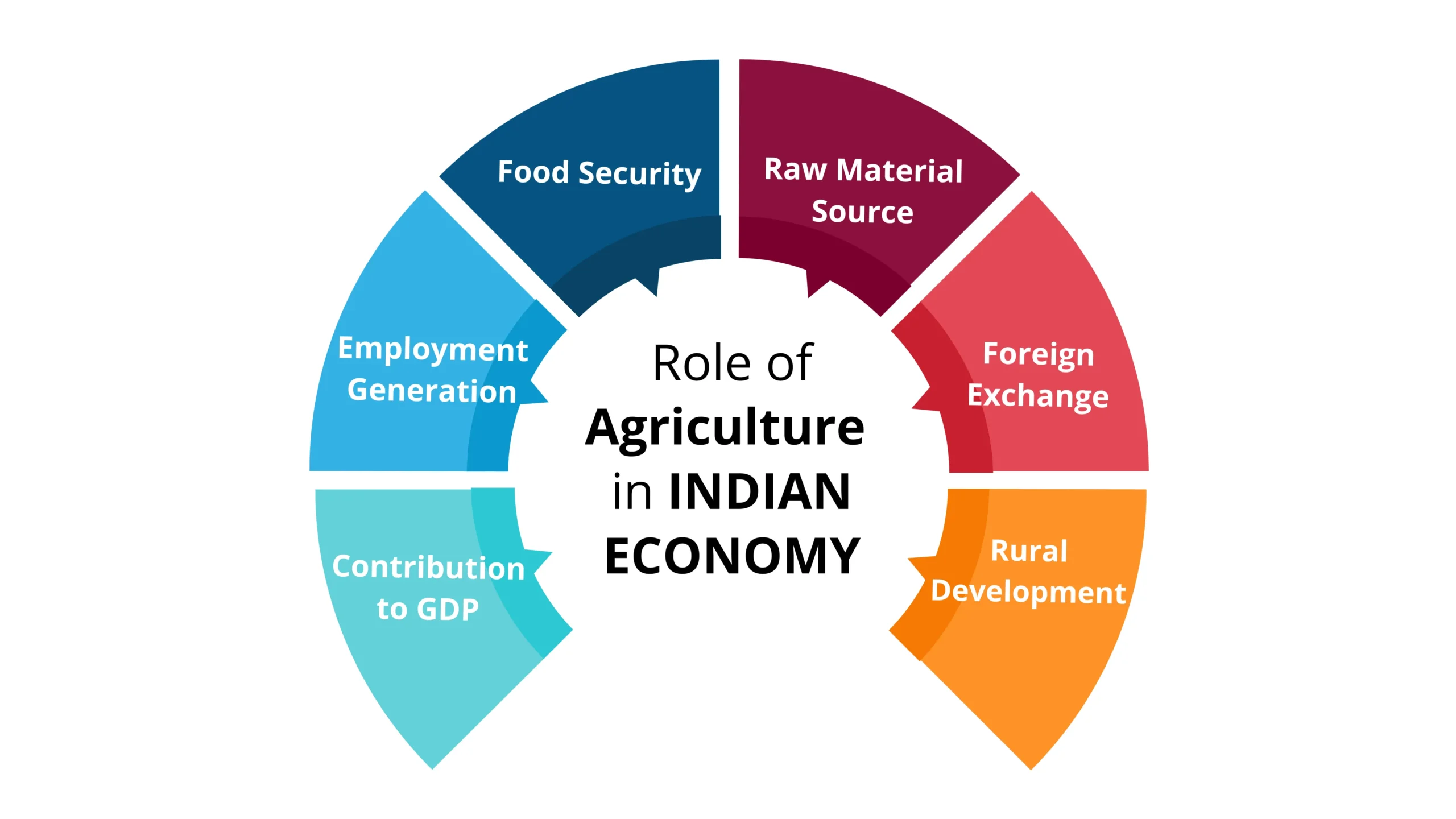The heart of the Indian economy is agriculture. For generations, it has served as the backbone of the Indian economy, sustaining the livelihoods of millions of people all over the nation. Millions of rural households rely heavily on agriculture as their primary income source, contributing significantly to the nation’s GDP. We are going to examine why agriculture is the backbone of the Indian economy.
The government has implemented various policies and schemes to help the agriculture industry, which is reflective of the sector’s importance to the Indian economy. These policies include Crop insurance, financial facilities, infrastructure development, and agricultural implement subsidies. Several government efforts to encourage the use of cutting-edge technologies and best practices in farming have also been implemented, contributing to a rise in agricultural production.
Role of Agriculture In Indian Economy

In this blog post, we will examine why agriculture holds such an important role in India’s economic landscape.
Contribution to GDP:
Agriculture remains a crucial contributor to India’s Gross Domestic Product (GDP). Despite the rapid growth of other sectors such as manufacturing and services, agriculture still accounts for a substantial share of the country’s GDP. This highlights its enduring significance in driving economic growth and development.
Employment Generation:
One of the most compelling reasons why agriculture is regarded as the backbone of the Indian economy is its role in employment generation. A large percentage of the population, particularly in rural areas, is directly or indirectly engaged in agricultural activities. From farmers and agricultural laborers to traders and agribusiness owners, millions depend on agriculture for their livelihood.
Food Security:
Agriculture plays a crucial role in ensuring food security for India’s vast and diverse population, which relies heavily on agriculture for its food needs. The sector produces a diverse range of food grains, vegetables, fruits, and dairy products, ensuring food availability for the nation. Despite rapid urbanization and industrialization, a significant portion of the country still relies on agriculture for their nutritional needs. Therefore, the ability of the agricultural sector to produce an adequate quantity of food grains and other essential crops is essential for maintaining food security.
Raw Material Source:
Agriculture serves as a primary source of raw materials for various industries, including food processing, textiles, sugar, and oil production. This interdependency fuels industrial growth and diversification.
Foreign Exchange:
India’s agricultural exports contribute significantly to its foreign exchange earnings. India is a major exporter of agricultural products like rice, wheat, spices, fruits, cotton, and vegetables. This generates valuable foreign exchange, contributing to the country’s economic strength and also helping offset the trade deficit to some extent.
Rural Development:
Agriculture plays a vital role in rural development by providing employment opportunities, fostering trade, and supporting the growth of small-scale industries. The prosperity of rural areas is closely linked to the performance of the agricultural sector. Investments in agriculture, infrastructure development, and support services not only improve agricultural productivity but also contribute to the overall development of rural communities.
Agricultural Sector in the Indian Economy:
While the Indian economy is diversifying, agriculture remains a significant contributor to its Gross Domestic Product (GDP), accounting for approximately 15-20%. This highlights its continued importance in the overall economic landscape.
However, the agriculture sector faces challenges like climate change, resource scarcity, and limited access to modern technology. Addressing these challenges through advancements in agricultural machinery, sustainable practices, and government initiatives is crucial for ensuring the sector’s long-term sustainability and growth.
Conclusion:
Agriculture’s multifaceted contributions solidify its position as the backbone of the Indian economy. It provides sustenance, fuels industries, generates revenue, and drives rural development. As India strives for economic progress, prioritizing the growth and modernization of the agricultural sector remains essential for ensuring the nation’s overall prosperity and well-being.
FAQ’s:
1. How can technology benefit the agricultural sector?
Technological advancements like precision agriculture, data-driven farming techniques, and automation can significantly improve agricultural practices. This leads to better crop management, reduced waste, and increased profitability for farmers.
2. What are the future prospects of agriculture in India?
With continuous innovation and government support, the future of Indian agriculture holds immense potential. By embracing technology, sustainable practices, and improved market access, the sector can contribute even more significantly to the nation’s economic growth and overall well-being.

